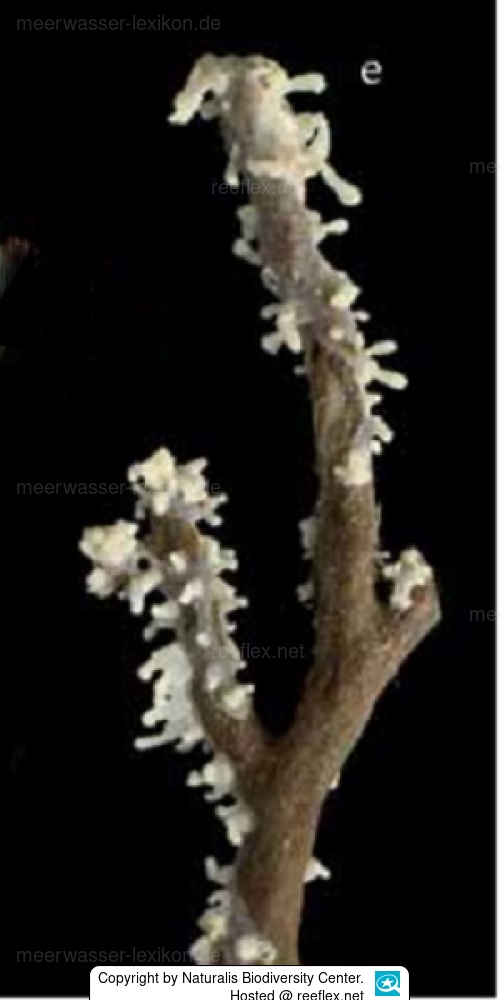Info
From the introduction of the paper "New and redescribed encrusting species of Alcyonium from the Atlantic Ocean (Octocorallia: Alcyonacea: Alcyoniidae)".
Four encrusting species of Alcyonium are known from the Atlantic Ocean:
Alcyonium coralloides (Pallas, 1766), Alcyonium grandiflorum (Tixier-Durivault & d'Hondt, 1975), Alcyonium maristenebrosi Stiasny, 1937, and Alcyonium senegalense Verseveldt & Ofwegen, 1992. material collected during CANCAP expeditions (see Van der Land, 1987) was examined. In addition, a specimen collected on the French CENTOB- cruise was also examined.
This material contained specimens of Alcyonium grandiflorum and Alcyonium maristenebrosi.
Three species new to science are also presented, all from depths of 1000 meters or more.
Color: The colony is white and all sclerites are colorless.
Etymology - The anthocodial sclerites of this species are the second longest in the genus and certainly the broadest, aher the species is also called "megasclerum".
Remarks - The species is similar to Alcyonium grandiflorum (Tixier-Durivault & d'Hondt, 1975) and Alcyonium profundum.
Alcyonium grandiflorum has very similar clubs in the calyxes and membrane, but differs in having much longer spindles in the membrane (0.75 mm long versus 0.40 mm), many tentacular bases, and more slender anthocodial spindles.
Alcyonium profundum differs by the complete absence of clubs in the calyxes and membrane.
Four encrusting species of Alcyonium are known from the Atlantic Ocean:
Alcyonium coralloides (Pallas, 1766), Alcyonium grandiflorum (Tixier-Durivault & d'Hondt, 1975), Alcyonium maristenebrosi Stiasny, 1937, and Alcyonium senegalense Verseveldt & Ofwegen, 1992. material collected during CANCAP expeditions (see Van der Land, 1987) was examined. In addition, a specimen collected on the French CENTOB- cruise was also examined.
This material contained specimens of Alcyonium grandiflorum and Alcyonium maristenebrosi.
Three species new to science are also presented, all from depths of 1000 meters or more.
Color: The colony is white and all sclerites are colorless.
Etymology - The anthocodial sclerites of this species are the second longest in the genus and certainly the broadest, aher the species is also called "megasclerum".
Remarks - The species is similar to Alcyonium grandiflorum (Tixier-Durivault & d'Hondt, 1975) and Alcyonium profundum.
Alcyonium grandiflorum has very similar clubs in the calyxes and membrane, but differs in having much longer spindles in the membrane (0.75 mm long versus 0.40 mm), many tentacular bases, and more slender anthocodial spindles.
Alcyonium profundum differs by the complete absence of clubs in the calyxes and membrane.







 Naturalis Biodiversity Center
Naturalis Biodiversity Center




















